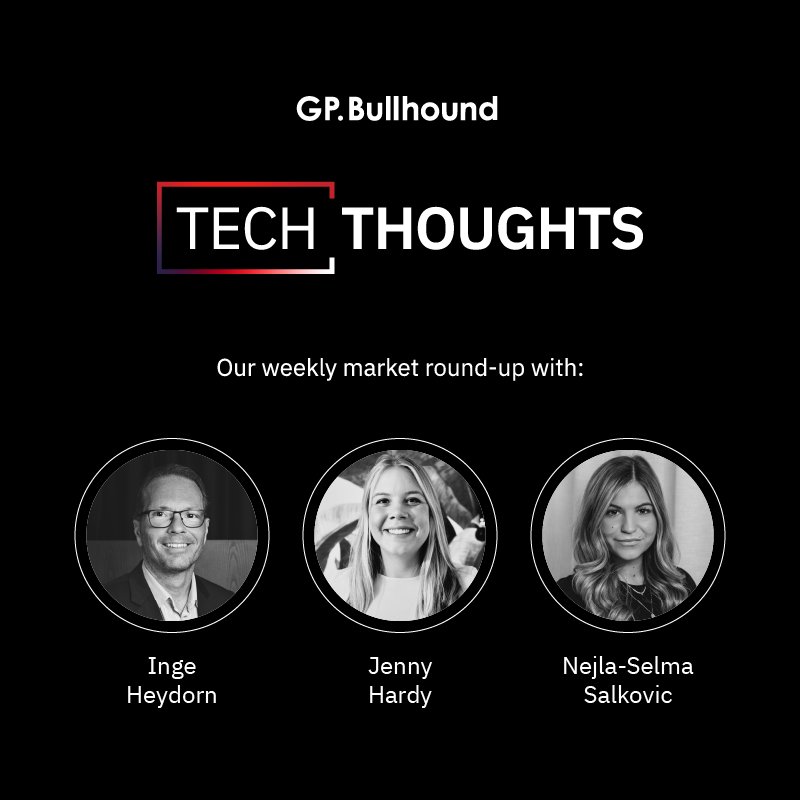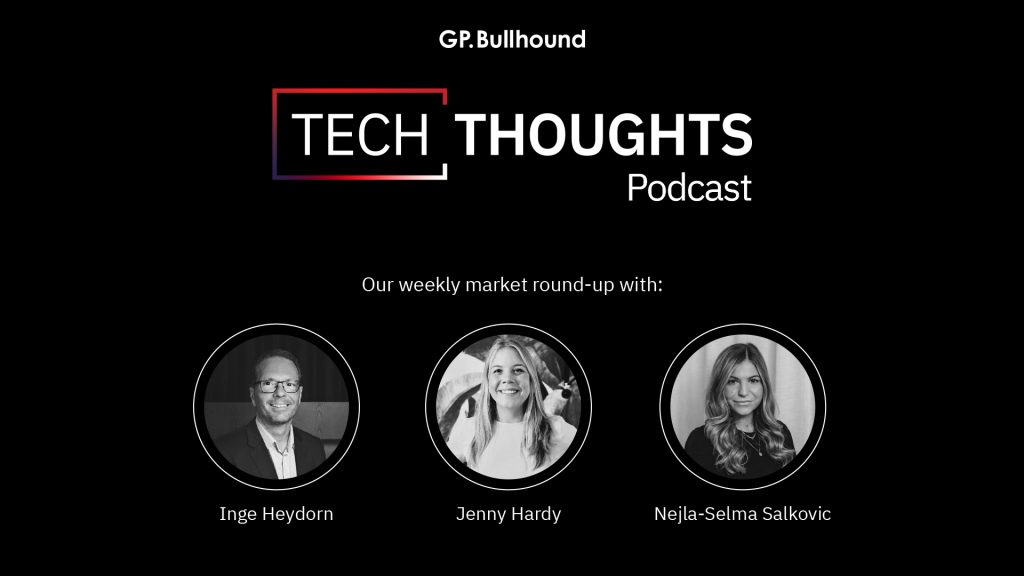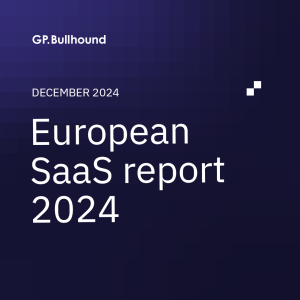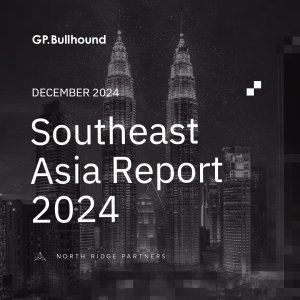Tech Thoughts Newsletter – 14 July 2023.

Market: The better-than-expected data (lower than anticipated inflation pressure) in this week’s US CPI report has driven down interest rates which have in turn driven up tech stocks.
Portfolio: We sold our small position in Disney this week, having reduced it significantly after last year’s Q3 results. We continue to think Streaming remains a tough business and Iger’s efforts to roll back the elevated levels of spend on commodity content will take time. We see better opportunities for capital elsewhere.
Salesforce price hikes – AI monetisation finally happening in enterprise software
- We’ve commented previously that we’re awaiting more meaningful monetisation plans from enterprise software companies around AI – so that AI becomes a meaningful revenue generator rather than simply a cost of doing business.
- This week, Salesforce (owned) announced that they would hike prices by an average of 9% across Sales Cloud, Marketing Cloud, Industries and Tableau, with a direct reference to AI in the rationale:
Salesforce’s last list price increase was seven years ago, and since then the company has delivered 22 new releases, thousands of new features – including recent generative AI innovations… Nearly every company in the world right now is exploring how generative AI can help drive efficiency and productivity for their business.”
- Salesforce has made several AI product suite announcements in recent months (recall back at its AI day last month it also introduced its AI starter pack at $360k per year), including announcements of Commerce GPT and Marketing GPT last week.
- It will allow its users to do things like auto-generate code for developers, generate marketing landing pages for marketers and draft customised sales emails.
Portfolio view: The question for us when thinking about software and AI has been when and if AI starts to be a meaningful revenue generator for software companies, rather than the current cost of doing business. Salesforce price hikes are a helpful sign. We ultimately think AI will lead to more consolidation of spend in the space, and those “platform-like” software businesses (we own Microsoft, ServiceNow, Salesforce, Workday and Adobe) are the best positioned both from a scale of investment and from a product set perspective (with an ability to leverage AI tools across a broad product suite) to both implement AI features and charge for them (or, like Salesforce, use them as a justification for price increases).
We would note that nothing is for free – all these businesses will likely need to either up capex to build out their own infrastructure, or buy AI compute capacity from cloud providers, which we’ll likely see impact their gross margin. In the context of their existing businesses, AI is still small, so we’re not seeing that yet, but it’s something to watch, and key for us in the portfolio are those businesses that can generate a meaningful and sustainable return on invested capital from those AI investments.
TSMC’s June numbers indicate Apple switch ongoing
- TSMC (owned) reported its June numbers this week, down 11% yr/yr and down 11% qtr/qtr.
- We think it shows Apple’s 5nm ramp down as it switches to 3nm. As a reminder we think this 5nm capacity will mostly be taken by Nvidia’s H100 product, but ramp-downs and product switches take time which we think we’re seeing in the down mth/mth numbers.
- Mediatek also reported its June numbers, up 21% mth/mth. This is our best read on the Android ecosystem (which we’re not exposed to), and also TSMC’s 7nm utilisation (we think Mediatek is ~20% of TSMC’s smartphone revenue).
- A bit like the broader consumer (below) we think we’re bouncing along the bottom of the Android smartphone space, with the inventory correction largely done but with few signs of real underlying demand.
Portfolio view: As it relates to TSMC/Nvidia we think we’ll start to see volumes ramp again through the year – as a reminder Nvidia’s Q2 guidance covers May/June/July and our above-consensus view relates to Q3/Q4 volumes.
Consumer/PC weak – inventories clearing but little signs of real underlying demand recovery
- The June notebook shipment figures (aggregated top 5 ODMs) came in at 12.65m units, +13% mth/mth, though down 16% yr/yr – still beating expectations. It means Q2 shipments came in at +16% qtr/qtr and -9% yr/yr. The expectations are for a flattish Q3 (which would be below the usual seasonal double-digit growth qtr/qtr), and hopes for a Q4 recovery.
- The conservative Q3 outlook suggests there are few tangible signs of a real demand recovery, and the Q2 strength is likely some customers digesting inventory more quickly, as well as new product launches and Chromebook pull-ins. Acer’s June Notebook revenues were up 59% mth/mth.
- Elsewhere in consumer, Nordic Semi took away its Q4 guidance, implying again a lack of visibility in consumer demand (it sells mostly into consumer tech products).
- Largan, which sells lens and camera modules into the smartphone sector saw continued inventory destocking and Q2 sales and margins missed. The new iPhone ramp should help Q3, but overall smartphone demand remains weak.
Portfolio view: We don’t own any of these consumer-end-market semi suppliers. While we’re seeing signs of light at the end of the tunnel in the consumer semis inventory correction (likely Q2), the reality is that consumer-exposed semis will still struggle to perform if consumer end demand remains weak (and where China remains a big factor – note that both import and export data this week were weak, down 12% yr/yr and 7% yr/yr respectively in June).
China auto production numbers for June reflect the strong shipments data
- We spoke last week about Chinese EV auto shipments data being the bright spot in a still broadly weak economy.
- This week we had the production data through – China produced 2.561m vehicles, +9.8% mth/mth and +2.5% yr/yr and sell-through was even higher at 2.622m vehicles (+10.1% mth/mth and +4.8% yr/yr) – auto dealers inventories declined back close to historic lows.
Portfolio view: In contrast to consumer semis, we do still like exposure to auto semis given the strength in demand coming from the EV shift (where the power semi-content increase is significant) – we own Infineon and NXP.
More signs of DRAM price stabilisation
- Nanya was more of the same (as Micron and Samsung) in DRAM – they think they are seeing a bottoming in Q2 and expecting a stabilisation/recovery in the second half (though with some unhelpfully wide caveats – they say it’s dependent on China, US enterprise cloud and the global economy). Positively, they are seeing inventory reductions, so regardless we hope prices won’t deteriorate further.
- End markets, no surprise – AI server demand is good, but enterprise IT spending is bad.
Portfolio view: This memory downturn is the worst the market has seen in over 10 years. While much of this is the result of extraordinary circumstances (pandemic, inflation), some of it is also the nature of the industry – we don’t own any memory players in the portfolio as the commoditised nature and reliance on each player staying rational on supply means that for us it doesn’t match our sustainable return on invested capital process. Pricing stabilisation is, however, helpful in the portfolio to the extent that falling memory prices are not conducive to high levels of memory capex (and we own LAM Research, which is particularly exposed).
Indian IT services broadly weak – Macro uncertainty pressuring ad budgets
- The Indian IT services names are always among the first reporters, and fair to say we’re seeing more of the same as last quarter with uncertainty around IT budgets.
- Wipro reported a fairly weak quarter – revenues declined 3% qtr/qtr, up 1% yr/yr, and margins were down 30bps qtr/qtr. Commentary pointed to overall budgets decreasing:
All around us in almost every industry, we see businesses that have been reducing discretionary spend in response to the weaker macro environment.”
- HCL was weak too, declining 1% qtr/qtr and a significant margin decline (110bps) qtr/qtr, alongside a deal TCV at its lowest level in 10 quarters. While management reiterated full-year guidance, it looks increasingly challenging to get there.
- TCS reported flat revenues qtr/qtr and margins down 130bps qtr/qtr.
Portfolio view: We don’t own any IT services/consultants and see them as late-cycle with spending having held up remarkably well through 2022 and now starting to come under pressure – it certainly isn’t clear whether H2 will mark any significant recovery over the weak H1.
“How much can we say we’re spending on AI before I go for summer holidays?”
- A few AI spend announcements this week.
- KPMG announced it plans to spend $2bn with Microsoft on Generative AI, to incorporate Microsoft’s Copilot and Azure’s OpenAI into its client offering.
- Indian IT Services company Wipro also announced it would invest $1bn to integrate AI into tools, platforms and solutions offered to clients.
Portfolio view: The world is spending on AI. KMPG and Wipro’s spending translates into capacity and capex for Microsoft/hyperscalers, which in turn translates into spend on chips (Nvidia, AMD – which we own). We said in last quarter’s results that Microsoft looked to be gaining share thanks to its OpenAI partnership and innovations around Copilot – let’s see if that share gain continues in Q2 results.
Microsoft/Activision – back on?
- The US federal system ruled that Microsoft can close its $75bn acquisition of Activision Blizzard, against the recommendation of the FTC which had argued that the combination would harm competition for gaming (their argument was still that Microsoft would pull Activision titles from PlayStation, which Microsoft has said explicitly that it won’t do).
- The judge found no evidence that it would hurt competition in the console or cloud-gaming market or that Microsoft had any intention to push exclusivity of Activision titles on Xbox consoles.
- We commented at the time on how little sense the arguments presented made (both by the UK and by the FTC).
- For the FTC argument, it makes no economic sense for Microsoft to stop selling Activision titles (the most obvious and talked about of which is Call of Duty) on PlayStation’s platform, and indeed Microsoft has offered to guarantee Call of Duty will be offered for sale as it already is in the traditional console universe. Microsoft has actually gone a step further and signed deals to make Call of Duty available on Nintendo Switch and Nvidia’s cloud streaming service. So after the deal gamers will have more choice, not less, around where they can buy and play Call of Duty.
- In their argument for blocking the deal in April, the UK CMA defined the market to be cloud gaming (specifically separate from the console gaming market) – and because Microsoft is the largest player in cloud gaming it should be prevented from acquiring important gaming content like Call of Duty, which it would only offer on its own cloud gaming platform – which itself is a compelling offer for consumers.
- The issue is that the CMA is deciding to effectively say that streaming is its own market that isn’t competitive with the console market, which is not the case. As it stands, Sony dominates the console market, and there’s very little in the way of competition. Cloud streaming is an alternative business model to console streaming and buying the game outright, so it’s an alternative business model that would have been killed before it gets going. Sony’s dominance in the traditional console market would be reinforced, which itself is negative for consumers.
- However, the UK said this week that it would consider new proposals from Microsoft to address its competition concerns (rumours are that Microsoft will give up some of its cloud gaming business in the UK), after its decision in April to block it.
- The FTC is appealing the district judge’s decision, but it does now look like the deal might be back on.
Portfolio view: We own Microsoft, though the gaming business remains a small part of the overall (because, as we say above, Sony dominates consoles and Xbox was a business that never got going), and the outcome of the case isn’t really a factor in our thesis. We think cloud gaming as an alternative business model (effectively subscription is interesting though – and it could well be Microsoft’s opportunity to build a big consumer business (which again, it has failed to do with Xbox).
More broadly, Microsoft/Activision approval and Broadcom’s EU approval this week (it is still waiting FTC and UK CMA) is positive as it relates to going against the “stop big tech from buying anything” political rhetoric that seems to have been in place over the last several years (we think it’s for sure right to challenge and think carefully about a $2.5tn company’s $75bn acquisition, but to blanketly not allow any deals feels overly simplified).
Semicap orders recovering
- VAT Group, which sells valves into the memory tools space, preannounced a case of “bad but better than feared”. VAT has been particularly hurt by the lower memory spend this year – and orders have been hit hard, Q2 will be down 56% yr/yr.
- Sequentially though, there are more positive signs – orders are up 14% vs Q1, helped by both a lower level of cancellations and increased new order activity.
- Mycronic, which makes mask production equipment (alongside AMAT, which has ~80% share) saw orders recovering in the second quarter too.
- Camtek, an Israeli inspection business increased its outlook on the back of strong orders from the high-bandwidth-memory space. They serve the same market as KLA so it’s a positive read across on the strength of spend in that market (AI servers are very HBM intensive).
Portfolio view: We don’t own the three companies above but we are exposed to the semicap equipment space with positions in ASML, Applied Materials, LAM Research and KLA. Expectations for spend have come down significantly this year and we continue to think orders will hold up better than the market expects, and indeed this quarter we might start to see some early signs of AI-related demand feeding into order books (as per Camtek’s comments).

For weekly insights on the latest market updates, please subscribe to our Tech Thoughts podcast.
For more information about the latest trends and forecasts, please visit our official Tech Thoughts page.
We provide investors with access to category-leading technology companies, globally. Our assets under management have a total value of more than $1bn, and our limited partners include institutions, family offices and entrepreneurs. Learn more about our funds here.
Enquiries
For enquiries, please contact:
Inge Heydorn, Partner, at inge.heydorn@gpbullhound.com
Jenny Hardy, Portfolio Manager, at jenny.hardy@gpbullhound.com
Nejla-Selma Salkovic, Analyst, at nejla-selma.salkovic@gpbullhound.com
About GP Bullhound
GP Bullhound is a leading technology advisory and investment firm, providing transaction advice and capital to the world’s best entrepreneurs and founders. Founded in 1999 in London and Menlo Park, the firm today has 14 offices spanning Europe, the US and Asia.



